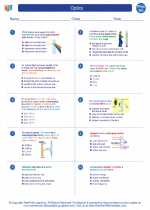Introduction to Squid in Physics
In physics, a squid refers to a type of device known as a Superconducting Quantum Interference Device. The squid is used to measure extremely small magnetic fields, making it a valuable tool in various scientific and medical applications.
How Squid Works
A squid functions based on the principle of superconductivity, which occurs when certain materials are cooled to extremely low temperatures, allowing them to conduct electricity without any resistance. The squid consists of a superconducting ring interrupted by two Josephson junctions. When exposed to a magnetic field, the squid generates an electric current, which can be measured and used to determine the strength of the magnetic field.
Applications of Squid in Physics
Squids are widely used in physics research, particularly in the fields of magnetoencephalography (MEG) and magnetic resonance imaging (MRI). MEG utilizes squid technology to map the magnetic fields produced by brain activity, providing valuable insights into neurological processes. In MRI, squids are utilized to detect the magnetic resonance signals emitted by the nuclei of atoms in the body, enabling the creation of detailed internal images for medical diagnosis and research.
Study Guide for Squid in Physics
- What is a squid in physics?
- Explain the principle of superconductivity and its relevance to squid technology.
- Describe the components of a squid device and how it operates.
- Discuss the applications of squid technology in magnetoencephalography (MEG) and magnetic resonance imaging (MRI).
- Explore the potential future developments and advancements in squid technology.



